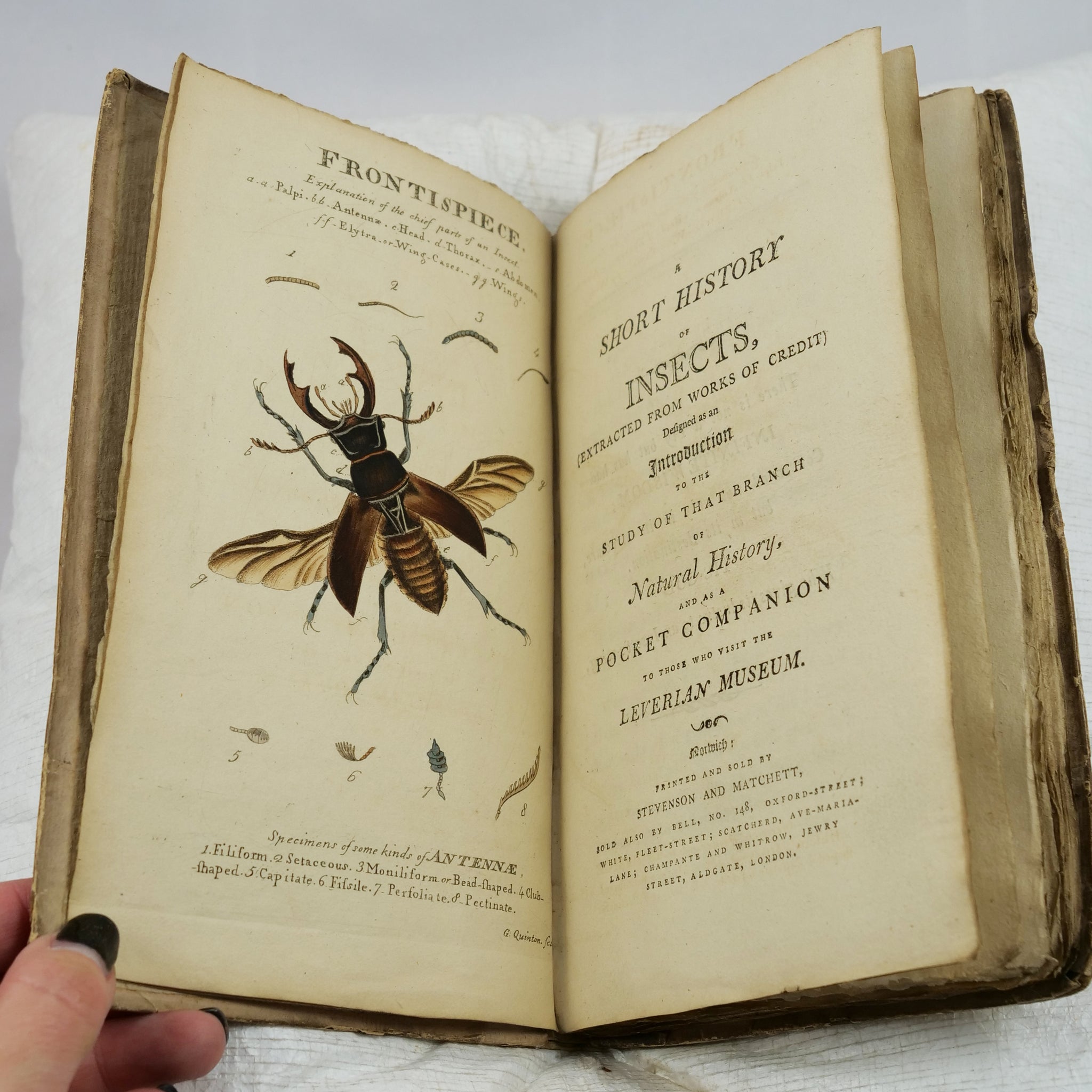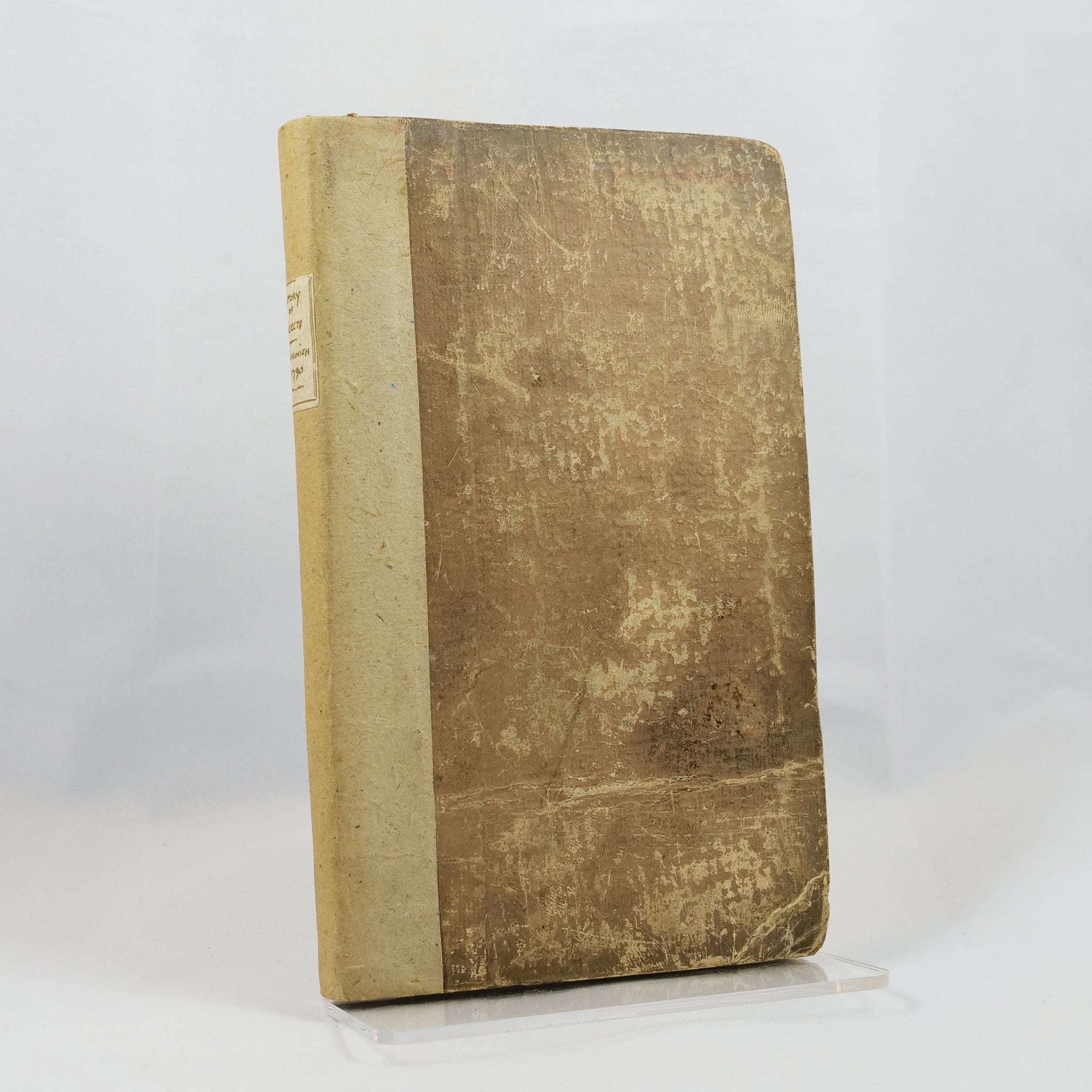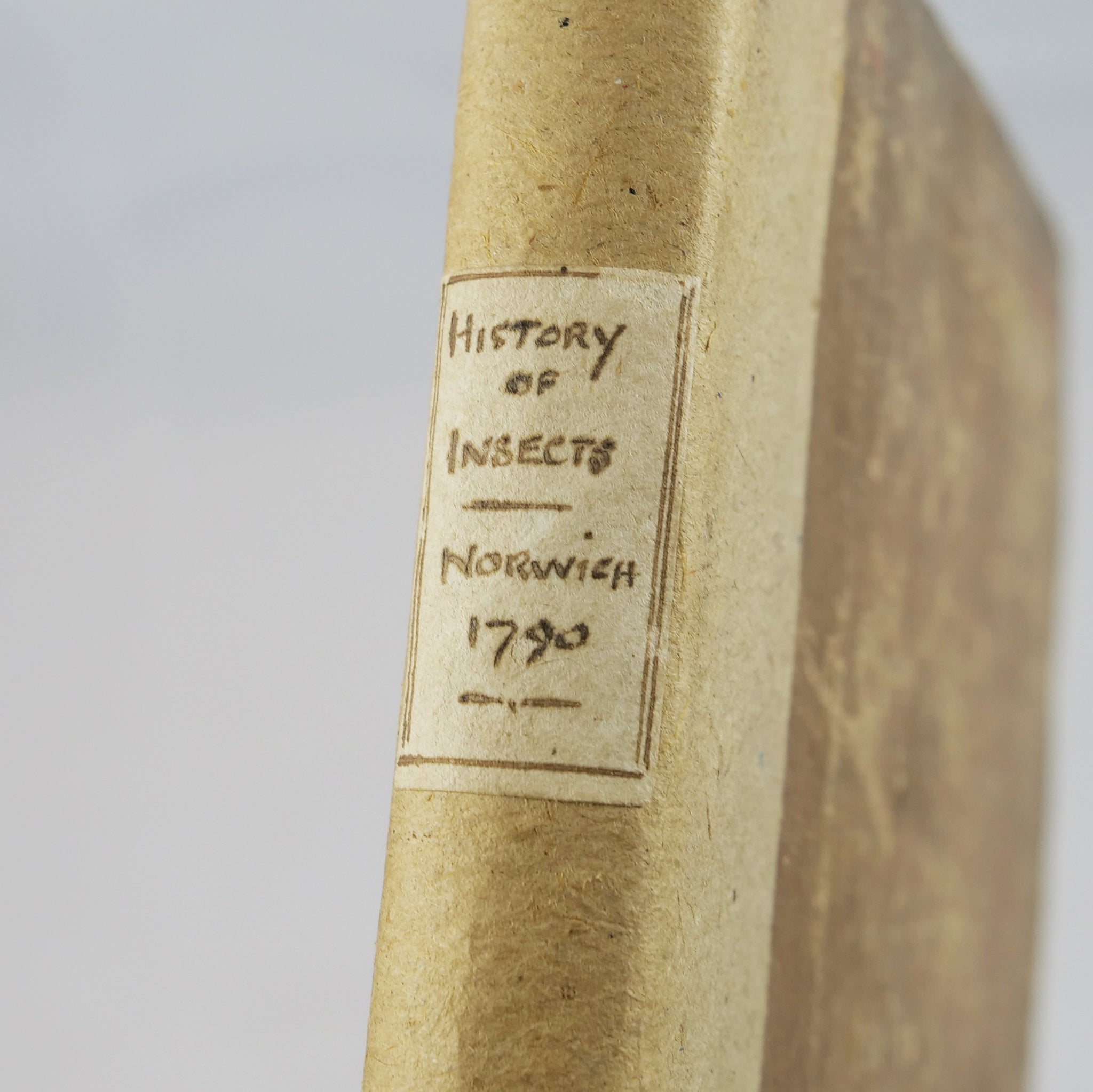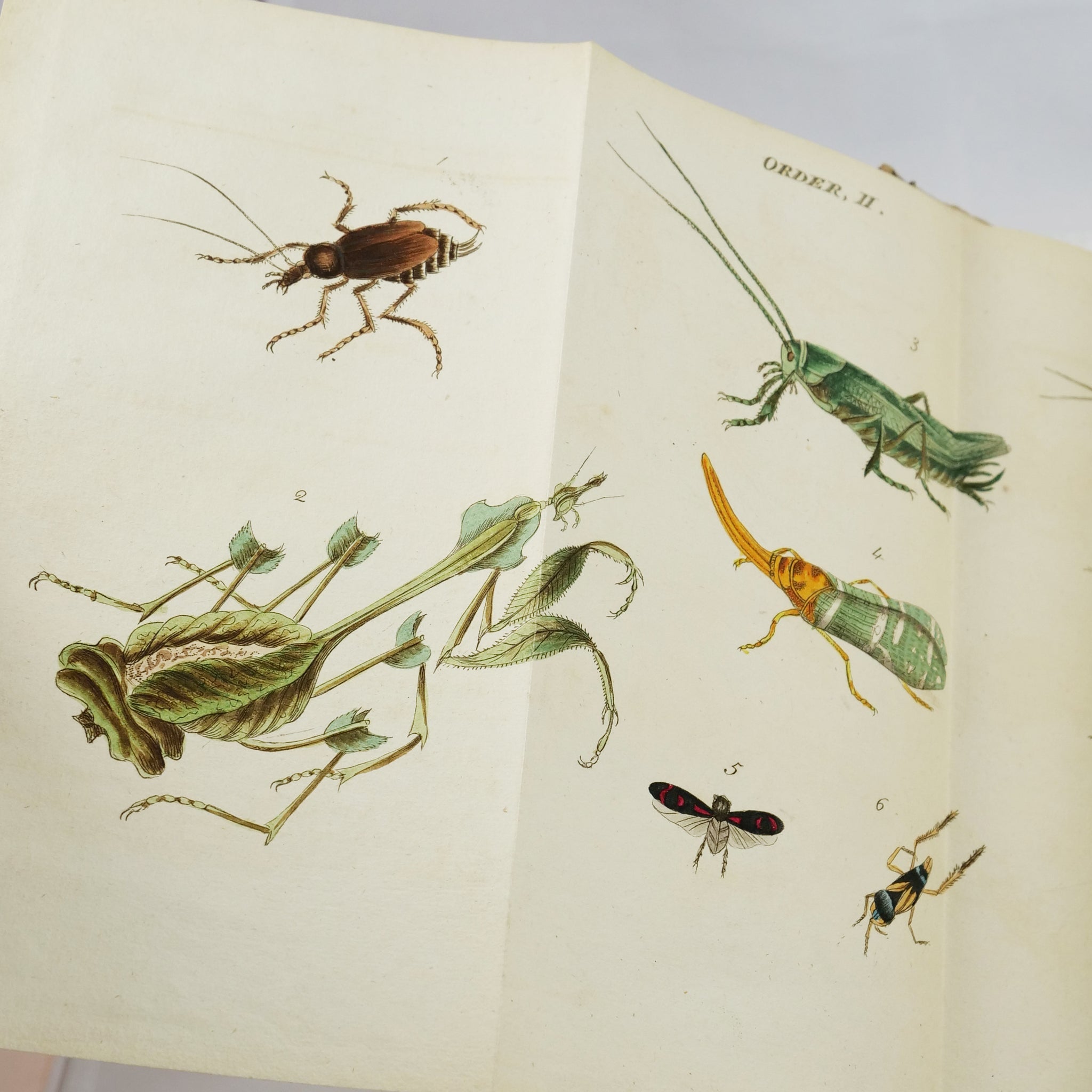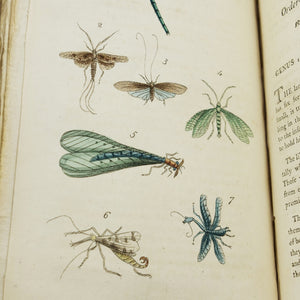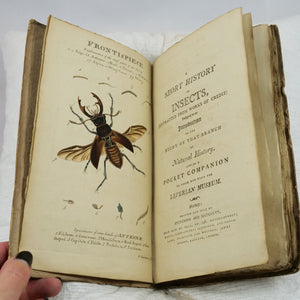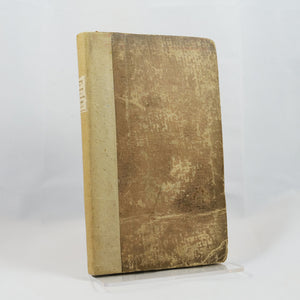Fenn, Lady Ellenor | A Short History of Insects
Sold Out
-
First and only edition of this rare work on entomology for children by the prolific educational author Lady Ellenor Fenn (1744-1815), who wrote under the pseudonyms Mrs. Teachwell and Mrs. Lovechild.
Fenn had no children of her own, but she and her husband, the antiquarian John Fenn, raised an orphan heiress and frequently looked after their nieces and nephews, for whom she began writing, illustrating, and binding manuscripts. She was influenced by Anna Letitia Barbauld's Lessons for Children (1778), and her early works were on manners, though she branched out to other non-fiction topics. “Her most famous title, Cobwebs to Catch Flies (1783–4), contained dialogues for teaching reading. A copy was received in the royal nursery, and it went through many editions in Britain and America until the 1870s. Ellenor was particularly interested in educating girls, and many titles were issued in the series Mrs Teachwell's Library for Young Ladies” (Oxford Dictionary of National Biography).
The preface to this volume opens with the observation that, "Natural History seems likely to become the amuseument of our Wives and Children; but the enormous expence of books on that subject; and other reasons still more cogent, point out the expedience of an epitome for the use of Ladies and Young Persons”. She also focused on mothers, writing book and producing games and other educational material to assist them in teaching material that they may not have had the opportunity to learn in their own youth.
This volume is also connected with the Leverian Museum, being a “pocket companion” to the collection that was built over many years by Sir Ashton Lever and was particularly rich in natural history specimens, as well as material from the Cook expeditions. The Museum was exhibited in Leicester Square between 1775 and 1786 (and was purchased by the physician James Parkinson in 1784), then for another twenty years across the Thames at the Blackfriars Rotunda. Fenn wrote another book based on its contents, on quadrupeds, published in 1792.
Fenn “realized the importance of pictures as an aid to learning and published several volumes of woodcuts for children, and seems to have maintained a close practical contact with her publisher in the layout and production of her works, which contain large types with wide margins.” This volume includes eight attractive, hand-coloured plates by the Suffolk engraver George Quinton (1776-1851).
“Ellenor Fenn's works were popular and well reviewed in her day and regularly reprinted until the 1860s. However, her formulaic output, her disapproval of imaginative stories, her insistence on class distinctions, and her determination 'to correct some of the foibles incident to girls' (Mrs Teachwell, Female Guardian, title-page) have not endeared her to twentieth-century critics... Yet she had humour and realized that the educational process must be enjoyable to both adult and child. Above all she had the gift of communicating with children at their own level” (ODNB).
-
...(Extracted from Works of Credit) Designed as an Introduction to the Study of that Branch of Natural History, and as a Pocket Companion to those who Visit the Leverian Museum. Norwich: Stevenson and Matchett, et al., 1797.
Duodecimo in sixes (185 x 110 mm). Original paste boards, recently rebacked to style with paper, new paper title label Hand-coloured, engraved frontispiece and 7 plates of which 3 are folding, by G, Quinton. Ownership initials to front free endpaper and monogram bookplate. Rebacked, as noted. Boards worn and dulled, lower corner knocked, contents clean. A very good copy.


